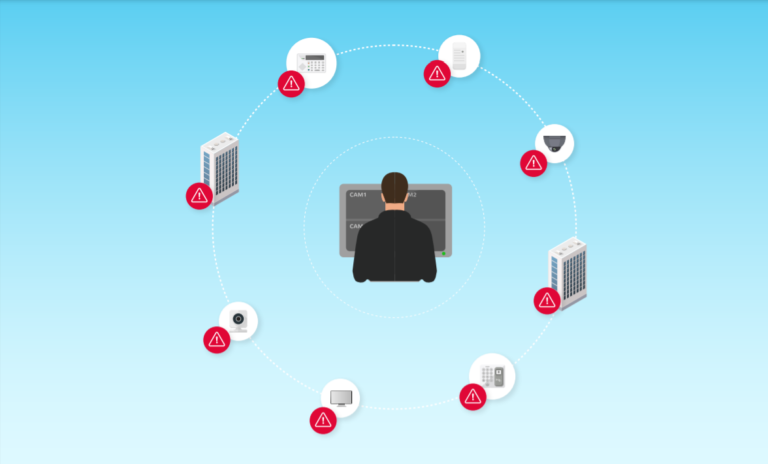The lack of efficient tools to manage IoT device deployments has become a liability for modern organizations. This shortcoming is particularly evident in the area of firmware updates for IoT devices. In this article by Securithings, we raise the main issues and analyze a possible solution.
To better understand organizations’ IoT-related challenges, we surveyed customers managing large fleets of devices across various industries. When asked to rank their main operational challenges, the majority named ongoing maintenance of IoT firmware updates as their most critical challenge.
In the absence of automated tools, most firmware updates are performed manually (if at all). The drawbacks of manual updates include that they are:
- costly
- time-consuming
- extremely error-prone due to interoperability issues, and
- lack proper validation and supervision
The result is that organizations rarely upgrade firmware versions – even those with known vulnerabilities . This means that their devices are regularly exposed to potential cyber attacks or operational failures.
The Power of Automation
Manual firmware updates are a non-starter for maintaining IoT deployments – often spanning several geographically distributed sites. Moreover, unlike other types of maintenance activities, firmware upgrades require physical access to the device itself. When maintaining large-scale IoT deployments (thousands of devices and more), the need for automation becomes even more critical.
From a security standpoint, using an old firmware version with published vulnerabilities is an open door for cyber attackers. After exploiting the vulnerability to gain a foothold in the IoT network, attackers can potentially move laterally within the network, jeopardizing the organization’s most valuable assets and data.
Not performing timely firmware upgrades can also exact a heavy operational price. For example, let’s say your Physical Security manager notices that CPU utilization has reached 100% on dozens of devices. If the root cause isn’t detected and corrected quickly, it’s only a matter of time before those devices crash. And even before they crash, they may not be operating properly.
But where the only option is time-consuming manual firmware management, we can’t expect to win against the clock.
One Real Life Issue with Manual Updates
Apply the above example of devices running at 100% CPU to an airport setting. IoT devices are massively deployed in airport security systems, so if an issue like this cannot be corrected in time you have the opportunity for security breaches of epic proportions!
Additionally, airports are now using smart technologies to ease passenger flow, with systems such as automated baggage handling, smart elevators etc. In a case where device malfunction can’t be prevented or fixed quick enough, as described above, the resulting turmoil in an airport would indicate that an alternative to time consuming manual firmware updates is becoming essential.
Airports are just one example of an environment where automating firmware updates of IoT devices is becoming a liability. Seaports, financial institutions, casinos, and corporate campuses face the same challenges from a security and operational standpoint.
How You Benefit from Automated IoT Device Firmware Updates
Using automated firmware upgrades, organizations can avoid the issues we’ve mentioned, in the following ways:.
- IoT teams can stop worrying about whether firmware versions are frequently upgraded or whether vulnerable firmware is identified and patched.
- Back to the previous example where your devices are running at 100% CPU. Root cause analysis discovers that other devices of the same model using a newer firmware version are operating normally. With a couple of clicks, the Physical Security manager can automatically update all relevant devices with the new firmware. Problem solved.
- Upgrading firmware automatically via IoT OTA (Over-the-air) updates make the daily routine of maintenance teams much easier. Manual updates become a thing of the past, while end users can manage device operations quickly and efficiently (regardless of scale) with full process supervision and update validation.
- In addition, automated firmware upgrades ensure devices will always be protected from known issues that manufacturers have addressed in the latest version.
- From a device management standpoint, automatically identifying vulnerable firmware versions helps organizations improve their compliance posture related to security and operations. In this way, automation smooths the way for IoT and IT teams to work in sync to secure organizational networks and assets.
Streamline IoT Device Maintenance and Improve Cyber Security Posture with Automation
By automating firmware upgrades across all devices, organizations can streamline operational efficiency and extend device lifecycle, while ensuring the security and availability of their business-critical IoT devices. Equally important, automation enables significant cost and time savings by eliminating manual updates.
SecuriThings brings IT management standards and capabilities, such as automated firmware upgrade and password rotation, to the world of IoT. SecuriThings Enterprise is a dedicated IoTOps solution that helps organizations manage device operations at scale using data, analytics and automation.
For more information about how your organization can benefit from automated operations for IoT devices, click here.
The lack of efficient tools to manage IoT device deployments has become a liability for modern organizations. This shortcoming is particularly evident in firmware updates for IoT devices. In this article by Securithings, we discuss the main issues and analyze possible solutions.
To better understand organizations’ IoT-related challenges, we surveyed customers managing large fleets of devices across various industries. When asked to rank their main operational challenges, the majority named ongoing maintenance of firmware updates for IoT devices as their most critical challenge.
Without automated tools, most firmware updates for IoT devices are performed manually (if at all). The drawbacks of manual updates include the following:
- Costly
- Time-consuming
- Extremely error-prone due to interoperability issues
- Lack proper validation and supervision
The result is that organizations rarely upgrade firmware versions – even those with known vulnerabilities. This means that their devices are regularly exposed to potential cyber-attacks or operational failures.

The Power of Automation
Manual firmware updates for IoT devices are a non-starter for maintaining IoT deployments, often span several geographically distributed sites. Moreover, unlike other maintenance activities, firmware upgrades require physical access to the device. When maintaining large-scale IoT deployments (thousands of devices and more), the need for automation becomes even more critical.
From a security standpoint, using an old firmware version with published vulnerabilities is an open door for cyber attackers. After exploiting the vulnerability to gain a foothold in the IoT network, attackers can move laterally within the network, jeopardizing the organization’s most valuable assets and data.
Not performing firmware upgrades promptly can also exact a heavy operational price. For example, your Physical Security manager notices that CPU utilization has reached 100% on dozens of devices. If the root cause isn’t detected and corrected quickly, it’s only a matter of time before those devices crash. And even before they crash, they may not be operating correctly.
But where the only option is time-consuming manual firmware management, we can’t expect to win against the clock.
One Real Life Issue with Manual Updates
Apply the above example of devices running at 100% CPU to an airport setting. IoT devices are massively deployed in airport security systems, so if an issue like this cannot be corrected in time, you have the opportunity for security breaches of epic proportions!
Additionally, airports are now using intelligent technologies to ease passenger flow, with systems such as automated baggage handling, smart elevators, etc. In a case where device malfunction can’t be prevented or fixed quickly enough, as described above, the resulting turmoil in an airport would indicate that an alternative to time-consuming manual firmware updates is becoming essential.
Airports are just one example of an environment where automating firmware updates for IoT devices becomes a liability. Seaports, financial institutions, casinos, and corporate campuses face the same challenges from a security and operational standpoint.

How You Benefit from Automated IoT Device Firmware Updates
Using automated firmware upgrades, organizations can avoid the issues we’ve mentioned in the following ways:
- IoT teams can stop worrying about whether firmware versions are frequently upgraded or vulnerable firmware is identified and patched.
- Back to the previous example where your devices run at 100% CPU. Root cause analysis discovers that other devices of the same model using a newer firmware version usually operate. With a few clicks, the Physical Security manager can automatically update all relevant devices with the latest firmware. Problem solved.
- Automatic firmware updates for IoT devices via IoT OTA (Over-the-air) updates make maintenance teams’ daily routines much more accessible. Manual updates have become a thing of the past, while end users can manage device operations quickly and efficiently (regardless of scale) with full process supervision and update validation.
- In addition, automated firmware upgrades ensure devices are always protected from known issues that manufacturers have addressed in the latest version.
- From a device management standpoint, automatically identifying vulnerable firmware versions helps organizations improve their compliance posture related to security and operations. Automation smooths the way for IoT and IT teams to sync to secure organizational networks and assets.

Streamline IoT Device Maintenance and Improve Cyber Security Posture with Automation
By automating firmware upgrades across all devices, organizations can streamline operational efficiency and extend device lifecycle while ensuring the security and availability of their business-critical IoT devices. Equally important, automation enables significant cost and time savings by eliminating manual updates.
SecuriThings brings IT management standards and capabilities, such as automated firmware upgrade and password rotation, to the world of IoT. SecuriThings Enterprise is a dedicated IoTOps solution that helps organizations manage device operations at scale using data, analytics and automation.
For more information about how your organization can benefit from automated operations for IoT devices, click here.
FAQs
What are the primary benefits of automated firmware updates for IoT devices?
Automated firmware updates for IoT devices provide enhanced security by ensuring all devices are updated with the latest patches for known vulnerabilities. They also reduce operational costs and downtime associated with manual updates.
How does automating firmware updates improve organizational security?
By automating firmware updates for IoT devices, organizations can quickly address security vulnerabilities, reducing the risk of cyberattacks and ensuring continuous protection for their IoT networks.
What challenges do organizations face with manual firmware updates for IoT devices?
Manual firmware updates for IoT devices are often costly, time-consuming, and prone to errors. They can also lack proper supervision and validation, leading to an increased risk of failure and exposure to cyber threats.
Why is it crucial to keep firmware updated for IoT devices?
Keeping the firmware updated for IoT devices is crucial as it helps to fix bugs, improve device performance, and close security vulnerabilities that cyber attackers could exploit.
Can automated firmware updates be integrated into existing IoT management systems?
Automated firmware updates for IoT devices can be integrated into existing IoT management platforms to enhance operational efficiency and streamline the update process across large-scale deployments.




